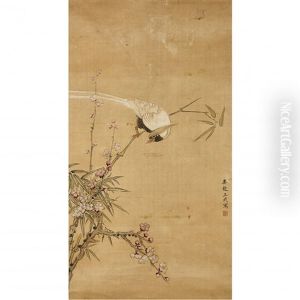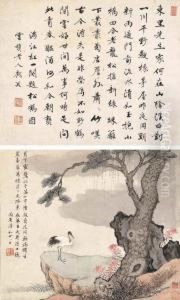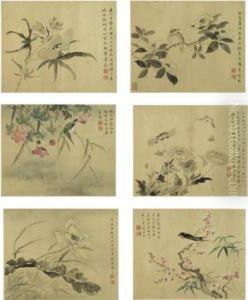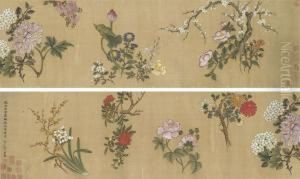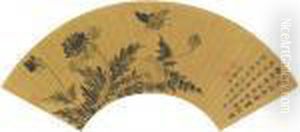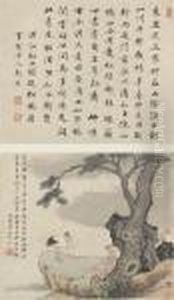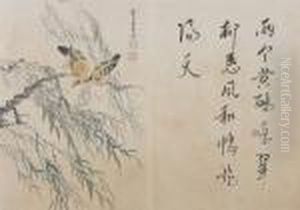Wang Wu Paintings
Wang Wu was a Chinese painter, calligrapher, and poet active during the Qing Dynasty, particularly renowned for his contribution to the art of Chinese literati painting. Born into a period of significant transition and upheaval, Wang Wu witnessed the fall of the Ming Dynasty and the rise of the Qing Dynasty, events that influenced the cultural and artistic landscape of China. Despite the political changes, he managed to carve out a distinct space for himself in the art world of his time, achieving recognition for his artistic skills and intellectual pursuits.
Wang Wu's artistic repertoire was diverse, encompassing landscapes, flowers, birds, and figure paintings, executed with a refined and delicate touch. His paintings often incorporated elements of both tradition and innovation, reflecting his deep respect for the past as well as his personal artistic vision. Wang Wu was particularly adept at bamboo paintings, a genre he excelled in, imbuing his bamboo stalks with a sense of vitality and resilience that resonated with the literati ideals of moral integrity and upright character.
Apart from his artistic endeavors, Wang Wu was also known for his calligraphy, which was highly regarded by his contemporaries. His style was characterized by a fluidity and grace, seamlessly blending strength with elegance. This duality in his art reflected the broader aesthetic principles of the literati, who valued the expression of personal emotion and the pursuit of spiritual refinement through art.
Wang Wu's poetry, though less well-documented than his visual art, further exemplifies his multifaceted talents and the literati ideal of the cultured scholar who excels in multiple artistic disciplines. His poems often explored themes of nature, solitude, and the contemplation of life's transience, echoing the sentiments expressed in his paintings and calligraphy.
Despite the recognition he received during his lifetime, Wang Wu's legacy is not as prominent as some of his contemporaries in the broader context of Chinese art history. Nevertheless, his contributions to the literati tradition and his ability to embody the ethos of his time in his art ensure his place among the notable figures of the Qing Dynasty's cultural landscape. His works continue to be studied and appreciated for their elegance, demonstrating the enduring appeal of the literati aesthetic and the personal expression it championed.
